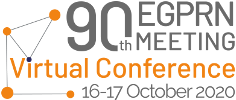Efficiency of the use of augmented reality in teaching anaphylactic shock at the primary health care level
Špela Tevžič, Zalika Klemenc Ketiš, Antonija Poplas Susič, Uroš Zafošnik, Polona Selič, Špela Mirošević, Nina Ružić Gorenjec
Keywords: augmented reality, medical education, primary care, emergency medicine, anaphylaxis, simulation
Background:
Anaphylaxis is a potentially life-threatening, rapid-onset hypersensitive reaction. Simulation is a tool that increases exposure to events in a safe environment, allowing trainers to develop skills without harming patients and is helpful in educating health care professionals on how to diagnose and manage anaphylaxis. Augmented reality has the potential to offer a novel approach to medical training that supplements conventional training methods with gamification and a more interactive learning experience.
Research questions:
What is the efficiency of the use of augmented reality in teaching the diagnostics and management of a patient with anaphylactic shock at the primary health care level?
Method:
We will develop a simulation scenario (for simulation with a high fidelity simulator in a learning and clinical setting and for augmented reality) for anaphylactic shock and an evaluation scale for assessing the effect of the intervention. We will conduct a single-blinded randomized controlled trial. We will enrol primary care physicians who will be divided into four groups (two controls, two tests). All participants will be involved in a one-day education program, consisting of lectures and skills practice. The test groups will additionally engage in the education about anaphylactic shock in augmented reality. The baseline will be assessed in a learning environment through a simulation based on the developed scenario. The simulation will be independently assessed with developed evaluation scale by three experts. Participants will perform the simulation again after the intervention. After 6 (first pair of control and test groups) and 12 months (second pair) a simulation will be repeated in the participants’ workplace with a standardised patient.
Results:
We expect the use of augmented reality in teaching will increase the share of completed simulations by 50%.
Conclusions:
We expect to prove that augmented reality is an efficient educational tool for emergency care at the primary health care level.
Points for discussion:
Should there be changes to the study timeline in order to better evaluate short- and long-term effectiveness of the intervention?
What are other evaluation tools that would assess the participants’ management of the patient during the simulation?
#47

